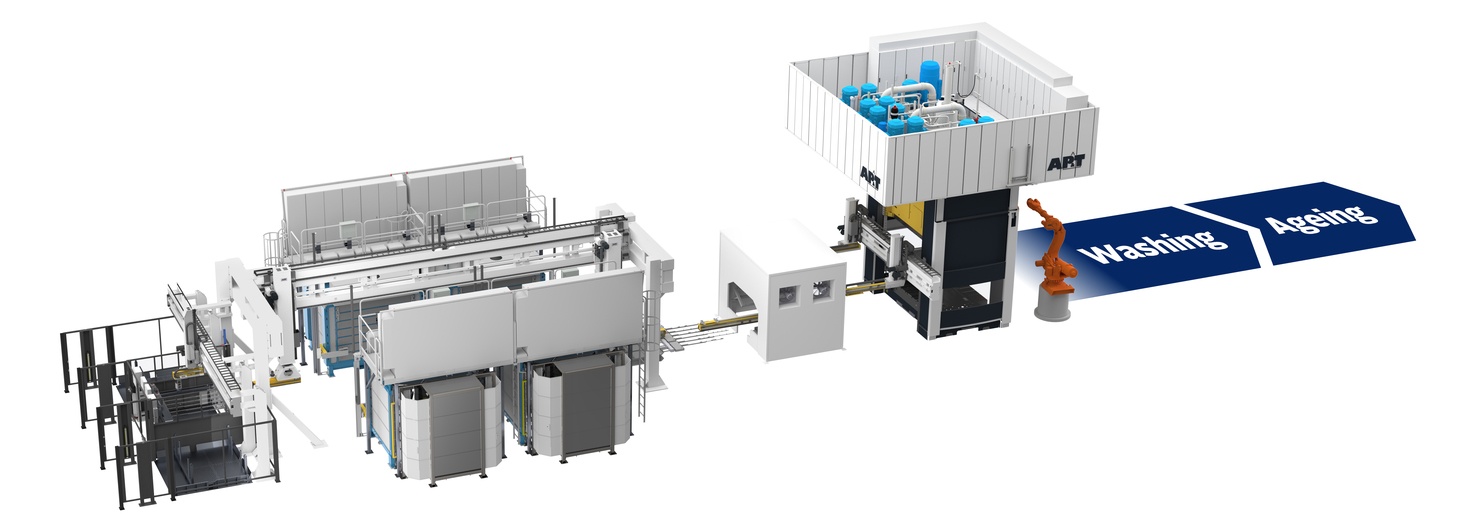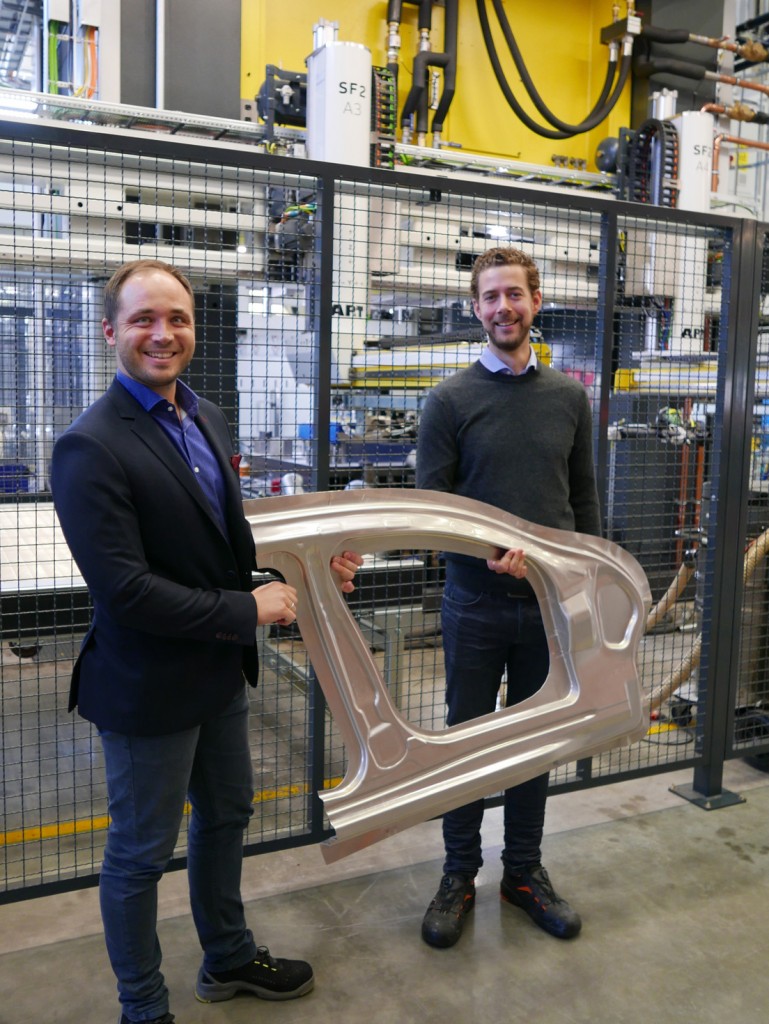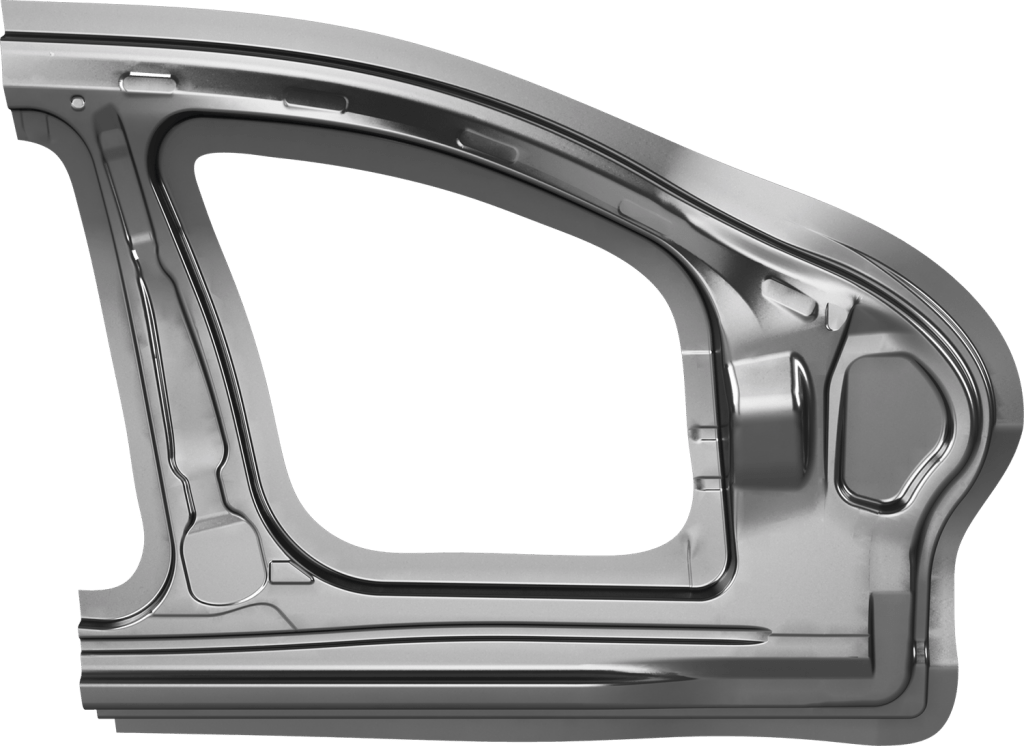What were the results when AP&T developed its revolutionary and award-winning production line for hot forming of aluminum? And what are the most important advantages? Read what the experts have to say here:
To meet increasingly strict government requirements regarding CO2emissions, the automotive industry has, for many years, been working to reduce fuel consumption and the climate impact of newly manufactured vehicles by taking various measures to reduce weight. New materials, new design and manufacturing methods have made possible lighter parts and components, resulting in reduced vehicle weight. In this, one of AP&T’s core areas, press hardening of sheet steel, has been of vital importance for the progress made so far. As we continue to improve and refine press hardening technology, we are also investing significant resources in developing production solutions for forming other materials and material combinations. One of the most interesting is high-strength aluminum which is considerably lighter than steel but still associated with higher material costs and has properties that put other demands on forming methods and machinery.

The first of its kind in the world, AP&T:s scalable production line for hot forming of high-strength aluminum offers entirely new possibilities for a cost-efficient production process, enhanced manufacturability and increased functionality of lightweight car body components.
From innovation project to award-winning production line
In 2013, AP&T began to investigate the possibility of developing a new process for hot forming complexly designed parts in high-strength aluminum for use in industry. During the following three-year period, AP&T ran and/or participated in a number of innovation projects with customers, universities and suppliers, primarily funded by the EU and other public stakeholders. The goal was to increase know-how by testing material, production processes and equipment both theoretically and practically. In 2016, the initiative resulted in an initial prototype line and a number of prototype components that showed great potential for the future.
A year later in the autumn of 2017, our first full-scale production line for hot forming of high-strength aluminum – hot forming, w-temper and warm forming – was inaugurated in our Ulricehamn, Sweden test center. The first of its kind in the world, the solution offers entirely newpossibilities for a cost-efficient production process, enhanced manufacturability and increased functionality of lightweight car body components.Thanks to the high strength and low weight of the material, the body weight could potentially be reduced by up to 40 percent by replacing conventional sheet steel with high-strength aluminum which can be made significantly thinner (down-gauging) while retaining its strength. The innovation gained much attention from the global automotive industry and was distinguished with several prestigious awards such as Altair Enlighten Award and SIQ Quality Innovation Award.Today, we have a fully commercial, scalable solution available to OEMs and Tier suppliers who wish to manufacture high-strength, low-weight, complexly designed body part components.
One Responsible Partner® for your complete solutions
To facilitate and ensure an efficient and correct implementation of the new technology at the customer site, AP&T offers complete, tailored solutions for which we take full responsibility for all included machinery, training packages, installation, deployment, service and support. The production line includes:
- High-speed destackers for blank feeding to the furnace.
- Furnace for quick and homogeneous heating, specially developed for 6xxx and 7xxx aluminum alloys.
- Intermediate cooling station, (a step that provides the blank with better formability and corrosion resistance).
- High-speed transfer of the blank to the press.
- AP&T’s unique, high-speed, high-precision and low energy-consuming servo-hydraulic press.
- Forming and cooled tools.
- Washing and pre-aging.
- End of Line Automation
Scalable, future-proofed and profitable from day one
The scalability of the new technology makes it an interesting investment even for small manufacturing volumes and also makes it possible to relatively easily increase production capacity at a suitable rate.
With regards to the production input per manufactured part, AP&T’s solution is very competitive compared to the methods available today. Due to the good formability of the material, components that are currently manufactured by joining several different parts, such as car door rings, are manufactured in as a single piece through one hot forming operation. This makes for a rational manufacturing process with fewer operations, simpler handling and logistics, fewer tools, better material utilization and, thereby, lower production costs per unit. To further streamline production, each operation in the process has been analyzed and optimized. One of the challenges was to lower the time for what is referred to as the artificial aging process.
New method for artificial aging results in shorter cycle times and easier assembly
In hot forming of aluminum, the conventional approach to harden the material is to heat it up to its Solution Heat Treatment temperature and form and cool it in the tool. To then obtain the desired mechanical properties, the material needs to be artificially aged by heating it again to a certain temperature within a specific time period. However, hardening through conventional artificial aging has two clear disadvantages: Firstly, it is very time consuming, sometimes taking up to several hours. Secondly, the material is getting hardened before the component is assembled to a car body and thus could result in difficulties during joining operations.
AP&T uses an optimized aging sequence in order to reduce cycle time by executing a pre-aging process after forming and quenching the part to prepare the material for the subsequently, so called paint baking process, which is performed after the car body is assembled. This pre-aging step takes between 5 and 30 minutes instead of several hours. The final hardening is carried out during paint baking which takes place after assembling the car body components. This leads to very ductile material behavior during the final assembly of the component in the car body shop and results in good joinability. This enhanced aging sequence was developed and evaluated by AP&T in collaboration with Hydro Aluminium, who developed an aluminum alloy (AA6xx) which is tailored for this process.
Tooling development with advanced simulation decisive for product quality
High standards are put on tools used in sheet forming to ensure that body parts meet the required tolerances and to avoid the risk of cracks. Developing tools for hot forming of high strength aluminum is currently important in AP&T’s tooling operations. We have optimized the tribological behavior between tool surface and high-strength aluminum blanks by using the right combination of tool coating and lubricant. Regarding the field of FEM-sheet forming simulation we have particularly put great effort in material characterization, to analyze the mechanical properties of various grades of high strength aluminum. Furthermore we have validated our simulation capabilities due to different test geometries to ensure for an effective interaction between FEM-simulation, tool design and tool manufacturing.
- AP&T’s Chief Technology Officer, Dr. Christian Koroschetz and Manager Development Forming Processes & Tooling, Dr. Michael Machhammer.
- Complex aluminum component which exhibits design elements from a door ring and door inner geometry.




Leave A Comment
You must be logged in to post a comment.